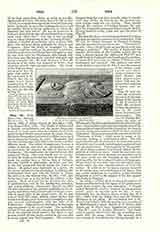

Pius IV, POPE (GIOVANNI ANGELO MEDICI), b. 31 of March, 1499, at Milan; elected December 26, 1559; d. in Rome December 9, 1565. The Medici of Milan lived in humble circumstances and the proud Florentine house of the same name claimed no kindred with them until Cardinal Medici was seated on the papal throne. His father Bernardino had settled in Milan and gained his livelihood by farming the taxes. Bernardino had two enterprising sons, both able to rise in the world by different roads. The oldest, Giangiacomo, became a soldier of fortune and after an adventurous career received from the emperor the title of Marchese di Marignano. He commanded the imperial troops who conquered Siena. Giovanni Angelo was as successful with his books as his brother with his sword. He made his studies first at Pavia, then at Bologna, devoting himself to philosophy, medicine, and law, in the last mentioned branch taking the degree of doctor. He gained some reputation as a jurist. In his twenty-eighth year he determined to embrace the ecclesiastical state and seek his fortune in Rome. He arrived in the Eternal City, December 26, 1527, just thirty-two years to a day before his election to the papacy. From Clement VII he obtained the office of prothonotary, and by his intelligence, industry, and trustworthiness commended himself to Paul III who entertained the greatest confidence in his integrity and ability and employed him in the governorship of many cities of the papal states. In the last year of Paul III’s reign, Medici, whose brother had married an Orsini, sister to the pope’s daughter-in-law, was created cardinal-priest with the title of S. Pudenziana. Julius III made him legate in Romagna and commander of the papal troops. The antipathy of Paul IV was rather to his advantage than otherwise; for in the reaction which followed the death of that morose pontiff all eyes finally settled on the man who in every respect was Paul’s opposite. The conclave dragged along for over three months, when it was obvious that neither the French nor the Spanish-Austrian faction could win the election. Then, mainly through the exertions of Cardinal Farnese, the conclave by acclamation pronounced in favor of Medici. He was crowned January 6, 1560, and took the name of Pius IV.
His first official act was to grant an amnesty to those who had outraged the memory of his predecessor, Paul IV; but he refused clemency to Pompeio Colonna, who had murdered his mother-in-law. “God forbid”, he said, “that I should begin my pontificate with condoning a parricide.” The enmity of Spain and the popular detestation of the Caraffas caused him to open a process against the relatives of Paul IV, as a result of which Cardinal Carlo Caraff a and his brother, to whom Paul had given the Duchy of Paliano, were condemned and executed. The sentence was afterwards declared unjust by St. Pius V and the memory of the victims vindicated and their estates restored. Cardinal Morone and other dignitaries whom Paul had imprisoned for suspicion of heresy were released.
Pius IV now devoted his undivided attention to the completion of the labors of the Council of Trent. He was luckier than his predecessors in the youth whom he created cardinal nephew. This was St. Charles Borromeo, the glory Milan and of the Universal Church in the sixteenth century. Pius had the satisfaction of seeing the close of the long-continued council and the triumph of the papacy over the antipapal tendencies which at times asserted themselves. His name is immortally connected with the “Profession of Faith“, which must be sworn to by everyone holding an ecclesiastical office. The few years which remained to him after the close of the council were devoted to much needed improvements in Rome and the papal states. Unfortunately for his popularity, these works could not be perfected without the imposition of additional taxes. Amid the numerous embellishments with which his name is connected, one of the most useful was the founding of the pontifical printing-office for the issuing of books in all languages. He procured the necessary type and placed the institution under the able superintendence of Paul Minutius. In addition to the heavy expenses incurred in the fortification and embellishment of Rome, Pius was under obligation to contribute many hundred thousands of scudi to the support of the war against the Turks in Hungary.
The mildness of Pius IV in dealing with suspects of heresy, so different from the rigour of his predecessor, made many suspect his own orthodoxy. A fanatic named Benedetto Ascolti, “inspired by his guardian angel”, made an attempt upon his life. A more formidable foe, the Roman fever, carried him off December 9, 1565, with St. Philip Merl. and St. Charles Borromeo at his pillow. He was buried first in St. Peter’s, but June 4, 1583, his remains were transferred to Michelangelo’s great church of S. Maria degli Angeli, one of Pius’s most magnificent structures. “Pius IV”, says the fearless Muratori, “had faults(who is without them?); but they are as nothing compared with his many virtues. His memory shall ever remain in benediction for having brought to glorious termination the Council of Trent; for having reformed all the Roman tribunals; for having maintained order and plenty in his dominion; for having promoted to the cardinalate men of great merit and rare literary ability; finally, for having avoided excess of love for his kindred, and enriched Rome by the building of so many fine edifices.”
JAMES F. LOUGHLIN

